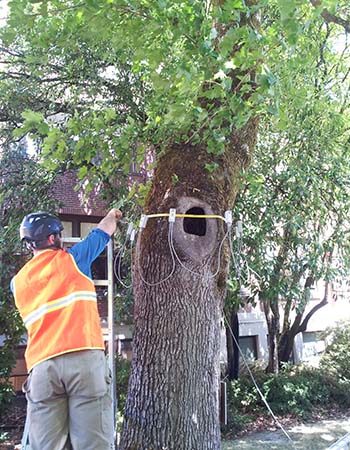
Ensuring Tree Safety: The Importance of Expert Tree Risk Assessment
Trees, while adding beauty and tranquility to our surroundings, can pose potential risks if not properly assessed and managed. Expert Tree Risk Assessment emerges as a crucial process to identify and address potential hazards, ensuring the safety of both property and individuals. Let’s delve into the significance of this assessment and how it contributes to securing serenity in our outdoor spaces.
Comprehensive Evaluation for Potential Hazards
Tree Risk Assessment involves a thorough and comprehensive evaluation of trees to identify potential hazards. Certified arborists, equipped with knowledge and experience, assess various factors such as tree structure, root health, and overall condition. This in-depth examination helps to uncover any potential risks that may compromise the safety of the tree or its surroundings.
Link to Tree Risk Assessment
For those seeking a professional Tree Risk Assessment to ensure the safety of outdoor spaces, consider the services provided by Tree Risk Assessment. Their certified arborists are adept at identifying and mitigating potential tree hazards, contributing to a secure outdoor environment.
Identification of Structural Weaknesses
One key aspect of Tree Risk Assessment is the identification of structural weaknesses in trees. This includes assessing the integrity of branches, trunks, and roots. By identifying any structural weaknesses, arborists can recommend targeted interventions such as pruning or cabling to strengthen the tree and reduce the risk of failure.
Evaluation of Environmental Factors
In addition to the tree’s internal condition, Tree Risk Assessment considers external environmental factors. Arborists evaluate the surrounding conditions, such as soil stability, proximity to structures, and prevailing weather patterns. This holistic approach ensures that the assessment takes into account both internal and external factors influencing tree safety.
Prioritizing Hazard Mitigation Strategies
Following a Tree Risk Assessment, certified arborists prioritize hazard mitigation strategies based on the identified risks. This may involve implementing preventive measures, such as pruning to remove dead or weakened branches, or installing support systems to enhance the tree’s stability. The goal is to address potential hazards proactively and prevent accidents before they occur.
Community Safety through Informed Decision-Making
Tree Risk Assessment not only enhances individual property safety but also contributes to community safety. Informed decision-making based on the assessment results ensures that potential hazards are addressed promptly. This proactive approach fosters a culture of safety within communities, reducing the likelihood of accidents caused by tree-related issues.
Linking Aesthetics with Safety Measures
Aesthetic considerations often drive our appreciation for trees, but it’s essential to link these aesthetics with safety measures. Tree Risk Assessment strikes a balance between preserving the visual appeal of trees and implementing necessary safety interventions. This integration ensures that outdoor spaces remain beautiful while prioritizing the well-being of the community.
Mitigating Risks During Extreme Weather Events
Trees face heightened risks during extreme weather events such as storms or heavy winds. Tree Risk Assessment anticipates these challenges by identifying trees vulnerable to weather-related stressors. By proactively addressing potential risks, communities can mitigate the impact of extreme weather events on tree safety.
Educating Property Owners for Ongoing Safety
Beyond the initial assessment, Tree Risk Assessment contributes to ongoing safety through education. Certified arborists provide property owners with insights into tree care practices, signs of potential hazards, and recommended maintenance. This educational component empowers property owners to play an active role in the continuous safety of their outdoor spaces.
Conclusion: Fostering Secure Outdoor Environments
In conclusion, Expert Tree Risk Assessment plays a pivotal role in fostering secure outdoor environments. Through comprehensive evaluations, identification of structural weaknesses, and informed decision-making, this assessment ensures that trees coexist harmoniously with their surroundings. By linking aesthetics with safety measures and educating property owners, the process contributes to a landscape where serenity is complemented by the assurance of safety.
